
Rattus is a genus of muroid rodents, all typically called rats. However, the term rat can also be applied to rodent species outside of this genus.
In biology, a monotypic taxon is a taxonomic group (taxon) that contains only one immediately subordinate taxon.
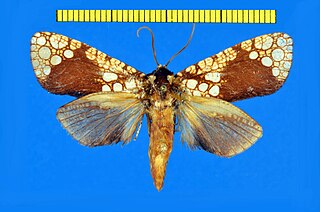
Dudgeonea is a small genus of moths and the only genus of its family, the Dudgeoneidae. It includes six species distributed sparsely across the Old World from Africa and Madagascar to Australia and New Guinea.

Grevillea is a diverse genus of about 360 species of evergreen flowering plants in the family Proteaceae, native to rainforest and more open habitats in Australia, New Guinea, New Caledonia, Sulawesi and other Indonesian islands east of the Wallace Line. It was named in honour of Charles Francis Greville. The species range from prostrate shrubs less than 50 cm (20 in) tall to trees 35 m (115 ft) tall. Common names include grevillea, spider flower, silky oak and toothbrush plant. Closely related to the genus Hakea, the genus gives its name to the subfamily Grevilleoideae.
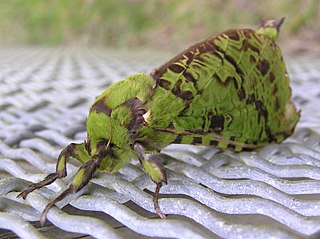
Aenetus is a genus of moths of the family Hepialidae. There are 24 described species found in Indonesia, New Guinea, New Caledonia, Australia and New Zealand. Most species have green or blue forewings and reddish hindwings, but some are predominantly brown or white. The larvae feed in the trunks of living trees, burrowing horizontally into the trunk, then vertically down.

The rainbowfish are a family, Melanotaeniidae, of small, colourful, freshwater fish found in northern and eastern Australia, New Guinea, islands in Cenderawasih Bay and Raja Ampat Islands in Indonesia, and in Madagascar.

Livistona is a genus of palms, the botanical family Arecaceae, native to southeastern and eastern Asia, Australasia, and the Horn of Africa. They are fan palms, the leaves with an armed petiole terminating in a rounded, costapalmate fan of numerous leaflets.

Nyctemera is a genus of tiger moths in the family Erebidae first described by Jacob Hübner in 1820. The genus includes the species Nyctemera annulata and Nyctemera amica, which are closely related and are able to interbreed.

The spectacled monarch is a species of bird in the family Monarchidae. It is found in Australia, Indonesia, and Papua New Guinea. Its natural habitats are subtropical or tropical moist lowland forests, subtropical or tropical mangrove forests, and subtropical or tropical moist montane forests.

Argina is a genus of tiger moths in the family Erebidae. They are distributed throughout Africa, Mauritius, China, India, Sri Lanka, Myanmar, Andaman Islands, New Guinea and Australia.
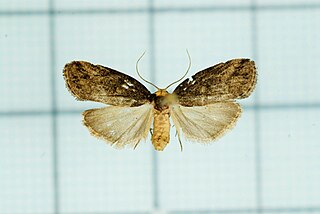
Eugoa is a genus in the family Erebidae, subfamily Arctiinae. The genus was erected by Francis Walker in 1858. They are found in India, Sri Lanka, Myanmar and Borneo.
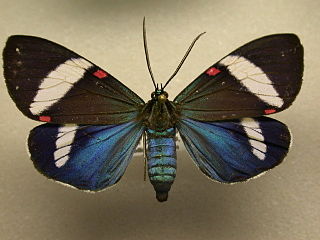
Hypocrita is a genus of tiger moths in the family Erebidae. The genus was erected by Jacob Hübner in 1807.

George Talbot FES was an English entomologist who specialised in butterflies. He wrote about 150 scientific papers, the majority being primarily systematic, consisting of the description of new species or the revision of various genera. He was also responsible for the curation and preservation of the Joicey collection of Lepidoptera prior to its accession by the Natural History Museum.

Philiris is a genus of butterflies in the family Lycaenidae. The species of this genus are found in the Australasian realm. Philiris was erected by Julius Röber in 1891. It is a speciose genus; Tite decided on 56 species, Sands added 11 species and placed the taxa into 21 species groups (broadly accepted by Parsons Most species are on New Guinea.Tite considered Philiris and Candalides Hübner, 1819 to be sisters. Eliot placed Philiris in Luciini Waterhouse & Lyell, 1914,
Azeta is a genus of moths in the family Erebidae.
Epimactis is a genus of moths in the family Lecithoceridae.

The Nyctemerina are a subtribe of woolly bear moths in the family Erebidae.
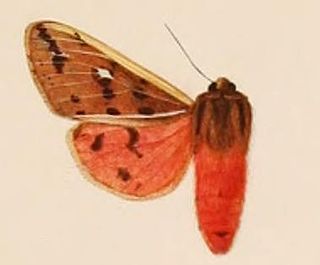
Spilaethalida turbida is a moth of the family Erebidae first described by Arthur Gardiner Butler in 1882.
Spilaethalida erythrastis is a moth of the family Erebidae. It is found in north-eastern Australia (Queensland).

Entocybe is a genus of agaric fungi in the family Entolomataceae. It was circumscribed in 2011 to contain several former Entoloma species having obscurely angular spores with 6–10 angles. Based on three locus DNA analysis, these species form a distinct, well-defined clade in the Entomolataceae that is basal to Entoloma. The genus name, a combination of Entoloma and Rhodocybe, alludes to similarities with species in those genera. E. melleogrisea, found in a subboreal forest in Québec, Canada, was described as a new species in 2013. Unlike the mostly collybioid fruit bodies of most other Entocybe species, E. melleogrisea has a tricholomatoid stature.
















